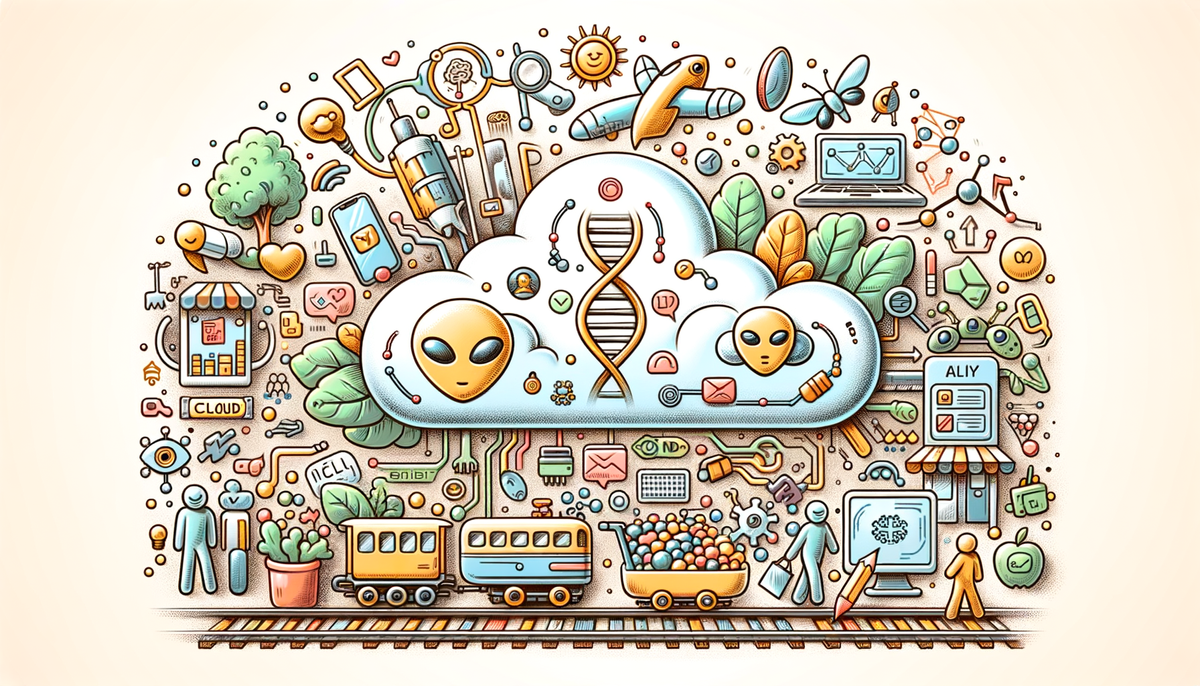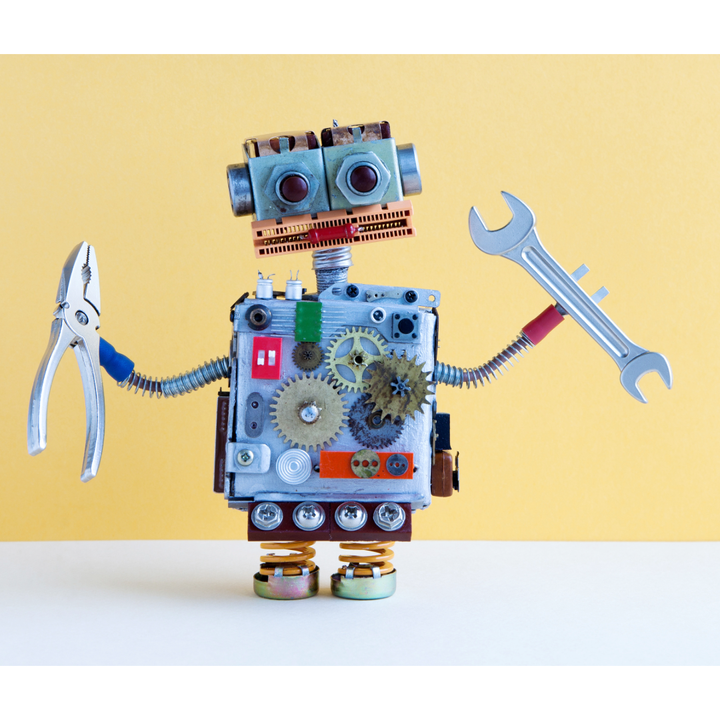Mindblowing AI Breakthroughs and Challenges in the Real World

This comprehensive exploration delves into how artificial intelligence is transforming a plethora of industries—from enhancing infrastructure safety in the transportation sector and revolutionizing healthcare drug discovery and diagnostics, to redefining retail operations and sparking innovation in computing technology. As we navigate stories from advanced rail safety predictions to cautionary tales in sales automation startups and groundbreaking breakthroughs in cancer detection, this article dissects both the promising potentials and the complex challenges that accompany AI’s rapid evolution.
AI on Track: Reinventing Rail Infrastructure Safety
Our journey begins on the rails, where the blend of artificial intelligence and high-performance computing is revolutionizing how we manage safety in transportation infrastructure. With trains transporting an impressive 59 tons of goods per American annually, ensuring the integrity of rail networks is paramount. Researchers at the University of Pittsburgh, in collaboration with the Pittsburgh Supercomputing Center, have spearheaded a project that employs AI models specifically designed to spot temperature-related risks in long, continuous rail segments.
This initiative represents a significant departure from traditional methods, which are notorious for their time-consuming and labor-intensive processes. The innovative approach deployed by graduate student Matthew Belding and his team leverages the power of the Bridges-2 supercomputer to simulate over 1,500 distinct cases of rail resistance under fluctuating temperature conditions—in just two weeks. In a remarkable feat of computational prowess, the AI tool was field-tested at the MxV Rail Facility in Colorado, where it demonstrated the practicality of early fault detection by predicting rail buckling in heat and fracturing in extreme cold.
Beyond just safety, the implications extend to ensuring the seamless flow of goods, which is critical for the national economy. The usage of high-performance computing in monitoring infrastructure is a vivid example of how AI not only augments human capability but also preempts catastrophic failures that could lead to costly shutdowns. As hybrid simulation and predictive modeling continue to evolve, one can expect even broader applications in various segments of the transportation industry.
For further insights into transformative applications in related sectors, consider checking out our article on AI's Impact on Shopping, Security, and Healthcare, where similar themes of technology-driven safety and efficiency are explored.
The Cautionary Tale of 11x: Navigating the Pitfalls of AI Hype
While some AI ventures soar to lofty heights, others serve as sobering reminders of the challenges inherent in scaling emerging technologies. The story of 11x, an AI-powered sales automation startup, resonates as a cautionary narrative. Backed by industry titans like Andreessen Horowitz and Benchmark, 11x famously projected rapid growth with an annualized recurring revenue (ARR) near $10 million within two years of its inception. However, closer scrutiny by investigative sources unveiled a network of inflated customer claims and a disturbing churn rate that painted a very different picture.
Delving into the allegations, it appears that many of the “acquired” customer logos were not genuine endorsements as companies like ZoomInfo and Airtable publicly refuted any association with the startup. The practice of merging short-term trial engagements with long-term contracts muddied the waters of financial transparency, contributing to a substantial misrepresentation of the company’s growth metrics. Such issues were further aggravated by internal pressures—reports from former employees referenced a brutal work culture that prioritized relentless hustle, an environment which ironically contributed to the very turnover issues the company claimed to have solved.
This narrative is a vivid reminder that the true potential of AI-driven solutions hinges not only on the novelty of the underlying technology but also on transparent business practices, ethical marketing, and genuine customer satisfaction. It also underscores the inherent risks of overselling AI capabilities without addressing the inevitable challenges such as model “hallucinations” and misaligned performance expectations.
Reflecting on these challenges, one might recall the words of Stephen Hawking:
"The development of full artificial intelligence could spell the end of the human race."
While his quote sparks debates on potential existential risks, in the context of commercial AI, it signals the importance of mitigating risks and ensuring the credibility of AI solutions.
Healthcare Breakthroughs: AI's March Against Cancer
Among the most inspiring applications of artificial intelligence is its transformative role in healthcare. Notably, a nonprofit organization has harnessed advanced AI techniques to disrupt the traditionally arduous process of cancer drug discovery. By analyzing vast amounts of data—from existing drug profiles and genetic information to clinical trial outcomes—the AI algorithms can rapidly identify potential drug candidates and innovative treatment strategies, significantly reducing the timeline for bringing new therapies to patients.
In a similar vein, another groundbreaking development has emerged in the realm of cancer diagnostics. The new AI model known as ECgMLP has achieved an unprecedented 99% accuracy in detecting endometrial cancer—a challenge that has long stymied traditional diagnostic methods. By employing advanced self-attention mechanisms, the model excels at enhancing medical images and filtering noise, thereby focusing solely on critical tissue information. Its accuracy isn’t limited to endometrial cancer; ECgMLP also demonstrates near-perfect accuracy across other cancer types such as colorectal, breast, and oral cancers.
Such AI-driven approaches not only promise to revolutionize cancer diagnostics and drug discovery but also pave the way for more personalized medicine. For example, by tailoring treatments based on individual genetic profiles, physicians can optimize therapy effectiveness while minimizing side effects. The implications extend globally, as the resource efficiency of these AI models means they can also bridge gaps in healthcare accessibility in under-resourced regions.
These advances herald a new era in medical technology where the acceleration of drug discovery and diagnostics could drastically improve patient outcomes. As we witness AI’s capabilities to cut down drug discovery timelines by over 50% and enhance diagnostic precision beyond what was previously conceivable, the integration of AI in healthcare is transforming not just treatments but the very fabric of medical research.
For those interested in further exploring the intersection of AI and healthcare innovations, our post on AI Innovations Transforming Our World provides additional examples of how advanced computational techniques are reshaping medical research and patient care.
Retail Revolution: Balancing Innovation and Risk
The retail sector is another vibrant arena where AI is effectuating significant change. Iconic brands like Macy’s and Target are rapidly integrating AI to improve various facets of their operations—ranging from customer service and supply chain management to personalized shopping experiences. Yet, with such innovation comes an equally pronounced need to navigate associated risks.
Regulatory filings and annual reports from major retailers reflect a dual reality: AI is a powerful tool that can optimize every element of retail operations, but it also introduces challenges such as potential system biases, data security vulnerabilities, and the risk of incorrect automated outputs. For instance, the very same technology that tailors recommendations for consumers can, if flawed, inadvertently expose sensitive customer data or generate misguided business insights.
Retail organizations are aware that lagging behind in AI adoption can be equally dangerous as rushing in without proper safeguards. In the competitive retail landscape, Target’s annual report warns of the perils of falling behind technologically, a sentiment echoed by other giants such as American Eagle and Kohl’s, who stress the imperative of keeping pace with rapid technological change while ensuring robust cybersecurity measures.
The balance between risk and reward in retail AI often involves massive capital investments. Giant retailers, such as Walmart with plans of allocating a $21-$25 billion budget for technologcial advancements, are betting that the returns from streamlined operations and enhanced customer interactions will outweigh the risks. This strategic focus on AI is underpinned by continuous investments in cybersecurity—as retailers fortify their digital defenses against increasingly sophisticated cyber threats.
The picture that emerges is one where innovation is not a linear journey but a delicate dance between leveraging new opportunities and mitigating inherent risks. As these retail giants navigate these uncharted territories, the lessons learned will likely influence how other industries approach the deployment of AI technologies. To see how AI is making waves in various domains, one might also explore our coverage on Darktrace Federal's FedRAMP High ATO Sets New Standards in Cybersecurity, which outlines strategic advancements in security measures.
Innovating the Future: AI in Computing and Patent Landscapes
While AI is visibly transforming traditional sectors such as transportation, healthcare, and retail, its influence is equally profound within the realm of computing technology. The European Patent Office (EPO) recently reported an increase in patent filings, particularly in computer technology where AI innovations are at the forefront. A notable statistic—16,815 filings, marking a 3.3% rise from the previous year—underscores the competitive edge that European innovators enjoy in AI-related fields. This momentum has been fueled by breakthroughs in machine learning, neural networks, and bio-inspired computing.
Equally compelling is the burgeoning interplay between AI and quantum computing. Although quantum technologies may still be a decade away from wide-scale realization, the strategic patents and innovations filed today lay the groundwork for tomorrow’s applications. For instance, AI-driven platforms in the field of drug discovery or secure communications could one day benefit immensely from the computational enhancements afforded by quantum computing. As European innovators continue to push the envelope, innovative solutions like the AI-driven bacterial infection test kit by Dutch inventor Rochelle Niemeijer exemplify the far-reaching impact of these technological advances.
The EPO's data also highlights a fascinating global dynamic: while the United States dominates with a hefty share of computer technology filings (34.4%), Europe’s contributions through EPO states account for an impressive 29.5%. This balancing act is further enriched by the significant innovations emerging from countries like Germany, Switzerland, and the UK, as well as stalwarts from the Asian innovation scene such as Samsung and Huawei.
Beyond patents and technological advancements, AI’s application in environmental sustainability is catching attention. Innovations such as advanced drone technology for forest monitoring illustrate how AI can also serve ecological causes—helping manage and preserve natural resources. This multi-faceted role of AI underscores its status as a transformative force that not only drives efficiency across various sectors but also contributes to the broader goal of sustainability.
In reflecting on these developments, one is reminded of Fei-Fei Li’s insightful observation:
"Even a cat has things it can do that AI cannot."
While this humorous remark underscores AI’s current limitations, it simultaneously challenges researchers and entrepreneurs to continuously innovate, ensuring that AI remains a robust tool rather than an all-encompassing solution. The evolving landscape of AI patents is a testament to the persistent drive toward building technologies that augment human capabilities rather than replace them.
Convergence of AI Initiatives: Toward a Holistic Future
The rich tapestry of AI applications—from safeguarding rail networks and personalizing retail experiences to accelerating cancer diagnostics and pioneering computational breakthroughs—collectively points to a future where AI is indelibly interwoven into the fabric of everyday life. Yet, this convergence also raises important questions about responsibility, transparency, and ethical governance.
Societies around the globe stand at a crossroads where innovation must be carefully regulated to prevent misuse and to safeguard human rights. The recent ratification of frameworks such as the Council of Europe’s Framework Convention on AI is emblematic of a growing international consensus—one where ethical oversight is mandated alongside technological progress. This dual approach ensures that as AI systems become more sophisticated, they do so within a structure that prioritizes both advancement and accountability.
Moreover, the intelligence behind seemingly disparate AI projects demonstrates a common thread: the drive to leverage data for actionable insights. Whether it’s predicting infrastructure failures or refining drug discovery, the fundamental reliance on vast data sets and computational power is unmistakable. These endeavors benefit markedly from interdisciplinary collaborations, where computer science merges with traditional domains of expertise, yielding innovative solutions to long-standing challenges.
Some experts have suggested that the most sustainable path forward for AI lies in adopting a mindset that prioritizes continuous learning and adaptation. Drawing on historical lessons from previous technological revolutions, it becomes clear that gradual integration combined with rigorous evaluation often yields better outcomes than rapid, unchecked deployment. The AI community itself—a vibrant mix of academic researchers, industry leaders, and startup pioneers—stands as a testament to the power of collective innovation.
To explore further how AI is reshaping industries and transforming business strategies, you might want to explore our spotlight on New AI Innovations Shaping Our Future, which provides another insightful perspective on this unfolding revolution.
Looking Ahead: Balancing Promise with Prudence
As breakthroughs continue to emerge at an astonishing pace, the dual imperatives of embracing innovation while exercising caution remain central to the conversation. The impressive capabilities demonstrated in infrastructure safety, cancer detection, and computing technology illuminate the vast promise of AI. However, the mixed signals from ventures like 11x serve as a critical reminder that sustainable growth demands rigorous accountability and transparent practices.
In the words of seasoned experts, AI is not an end in itself but a powerful tool that augments human expertise. Its evolution is not merely measured in percentages of accuracy or volumes of patent filings but also in its capacity to transform lives, elevate industries, and foster global collaboration. With each innovation—whether a nuanced predictive tool for railway safety or a life-saving diagnostic breakthrough—the convergence of diverse AI disciplines reinforces the idea that future success will depend on our ability to meld technological potential with ethical responsibility.
A critical takeaway here is the importance of interdisciplinary dialogue. Just as the rail system benefits from a blend of civil engineering and high-performance computing, so too must the realms of healthcare, retail, and computing engage in collaborative dialogues about best practices, accountability, and innovation. In embracing this balanced approach, we are best positioned to harness AI’s full potential while minimizing risks.
As we stand on the cusp of a new technological dawn, it is essential to remember that while AI offers unprecedented opportunities, it also demands a measured, thoughtful approach. Whether viewed through the lens of improved infrastructure reliability or accelerated medical research, the AI revolution is as much about human ingenuity as it is about cutting-edge algorithms.
Further Readings and Perspectives
For readers seeking a deeper dive into the multifaceted world of artificial intelligence, the following resources offer valuable insights:
- Explore how AI is transforming key industry sectors in our analysis on AI's Impact on Shopping, Security, and Healthcare.
- Gain insights into the global technological breakthroughs driving innovation with our feature AI Innovations Transforming Our World.
- Review the strides in cybersecurity set by industry leaders in Darktrace Federal's FedRAMP High ATO Sets New Standards in Cybersecurity.
- Delve into emerging strategies for the future of technology in our coverage on New AI Innovations Shaping Our Future.
Together, these stories build an expansive picture of AI’s multifarious impact—a reminder that while the path ahead is filled with challenges, it is equally rich with opportunity.



Comments ()